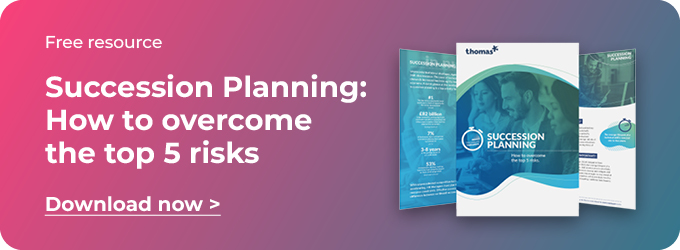People are key to achieving organizational goals, so it’s vital to have a strategy in place to manage talent. Successful talent management offers many business benefits, from adding value to your brand and creating a positive company culture to improving organizational performance. To enjoy these benefits, your talent management strategy should be fully aligned to your overall business aims and objectives.
In this article, we explore exactly what should be included within your talent management strategy and the main benefits of having such a strategy in place. You will also find a useful step-by-step guide on how to develop a talent management strategy within your organization.
What is talent management?
Talent management encompasses everything involved in attracting, engaging, motivating, developing and retaining high value employees. And a talent management strategy is designed to support organizations through every stage of the recruitment and retention cycle, from attracting talent and developing talent to engaging and retaining high-quality staff as valuable resources.
To create a successful talent management strategy, you will need to consider the following:
Make a good first impression
Prospective recruits are expected to make a good first impression when applying for jobs and attending interviews. But it’s equally important for you to consider how potential job applicants view your organisation. To improve your chances of attracting talent, take steps to review your employer branding, evaluate your company culture and find out what your current staff have got to say about working for you.
Be proactive
Don’t underestimate the value of having a clear process for encouraging staff engagement with education, training and development opportunities. Consider using Thomas assessments to map out the competencies, strengths, skills and training needs for each employee. The results will help you to assign tasks to the most appropriate worker, which could lead to improved levels of job satisfaction and productivity within the workforce.
Support existing staff
Supporting and managing talent will help you to recognize high potential. This will enable you to highlight people who are potentially suitable for leadership roles. Consider skill areas such as team working, communication and conflict management when identifying staff who may be suitable for succession planning.

Talent management strategy
Having a structured talent management strategy in place can help streamline people management processes in the following key areas:
Hiring
A talent management strategy will help you to plan resources in accordance with business needs. If your short and long-term organizational goals are clearly mapped out, planning your future manpower needs should be easy. You will also be able to tailor job adverts, screening processes and interviews to your overall business strategy. In the long run, this could help to ensure your business is hiring people that will prove to be a good fit for the team.
Improved induction and onboarding
A simple onboarding process when joining the organization is vital to nurturing the employee/employer relationship. Ensuring the induction stage runs smoothly will mean new starters are clear on their job role, objectives and how they contribute to the overall business strategy. A clear and concise induction program is vital for a successful talent management strategy.
Learning and development
Your talent management strategy will help HR to identify where additional training and development initiatives might be needed - both immediately and in the future. After a skills gap has been identified, you’ll be able to get to work on finding appropriate courses and professional development activities.
Communication
Your talent management strategy communicates efficient, two-way communication across the organization. Effective communication can have positive benefits on organizational culture - without it, your business is unlikely to thrive.
Employee retention
Whatever you do, some of your high-achievers will be tempted to leave your organization for a new opportunity. Having a transparent talent management strategy in place means your staff will have clear guidance on the development opportunities available to them. It also encourages managers to have open and honest discussions with employees about performance and succession planning.
Succession planning
Even with employee retention plans in place, some of your top performers will still eventually decide to leave for pastures new. When this happens, your talent management strategy will make it easy to identify up-and-coming talent already within the organization - meaning you’ll have a cost-effective solution for filling the gaps quickly, without impacting overall productivity.
Developing a talent management strategy
We’ve outlined the reasons why having a talent management strategy in place is important. If you’re wondering how best to implement this in your business, follow our step-by-step guide below.
1. Establish your organization’s key objectives
It’s impossible to create a successful talent management strategy without referring to your overall business strategy. List your organizational objectives in priority order, considering the short and long term future. Are you due to launch a new product? Do you have plans to enter a new market? What will be the impact of these changes on your organization overall?
2. Highlight potential drivers and challenges
Once you’ve established your strategic direction, think about what you will need to do to drive your objectives forward. Then consider the barriers and challenges which might stop you from achieving your goals. These could be anything from legislative changes and technology developments to competition within the employment market or the results of your customer satisfaction survey. If there is a skills-gap within the local job market, do you need to consider offering a relocation package or other incentive to potential recruits?
3. Carry out a gap analysis.
Evaluate the current state of your business, then consider where you would like your organization to be in an ideal world. Identify the differences between the two pictures, making a note of the gaps you will need to fill. What are the risks of not addressing those gaps?

4. Create HR-focused objectives and priorities.
Revisit the information you’ve recorded on your organizational goals, barriers and gaps. Think about how the people within your business could be best used to achieve your objectives, overcome challenges and fill in the gaps. Convert these thoughts into SMART objectives (specific, measurable, achievable, realistic, time-bound) and align them to your business objectives. Will you need additional human resources? Are changes to existing job roles required? Do you need to consider changes to working patterns or processes?
5. Evaluate existing talent management process
If you already have some form of talent management procedure in place, take a look at whether you need to adjust or improve this.
6. Track and measure achievements
Once you’ve established your HR objectives and priorities, it’s vital to track how effective they are - and make sure you communicate the results to key stakeholders within the business. Doing so will help to gain executive buy-in, as well as the chance to make improvements to the process where they are needed.
Talent management strategy examples
Thomas.co has supported a number of organizations to implement a successful talent management strategy. Read on to find out more.
Silverlake Automotive Recycling
Over 10 years ago, Silverlake experienced a period of growth, so they decided to expand their workforce. They wanted to have access to a wider talent pool to help ensure they were choosing the most appropriate staff. They also wanted to make sure their existing employees were in the right job roles. Thomas International supported Silverlake through the provision of assessments, and they’ve continued to use our PPA and GIA ever since. As a result, the company has enjoyed 300% business growth, recruited great staff and created a harmonious, productive working environment.
CDUK
When CDUK was first established, Geoff Baker (Chairman) was searching for ways to put down strong foundations for the business. He wanted to do this by recruiting the right people and helping them to develop. Today, CDUK continues to use our TEIQue assessment to “assess how well people understand and manage their emotions”, and the GIA to measure aptitude. These assessments are used throughout the employee journey; from recruitment and induction to team integration and annual appraisals.
Johnsons Workwear
Johnsons had an ambitious business strategy and nurturing their talent pool had been identified as an important way of ensuring success. But attracting talent was proving difficult and costly - and training new staff was often a lengthy and complicated process.
In 2017, Johnsons decided to launch their Academy, a 12-month executive sponsored talent management program. They wanted to find a way to identify candidates with high potential to join the Academy. Thomas International supported them to achieve these goals with our PPA and HPTI tools. Johnson's Learning and Development Management describes these as critical tools to the Academy’s continued success. Since its implementation, more than 70% of 2017 Academy graduates have achieved promotion within 18 months of completion.
Thomas.co talent management resources
Check out our resources today to find out how Thomas International can support your business with your talent management and high-potential trait development objectives. We offer global solutions for every step of the talent management process including recruitment, development, retention and training.
Get in touch with us today to discover how we can support you to recruit, retain and develop the right people for your business.





